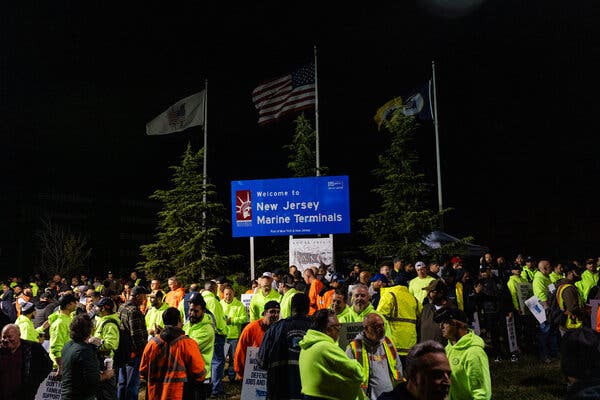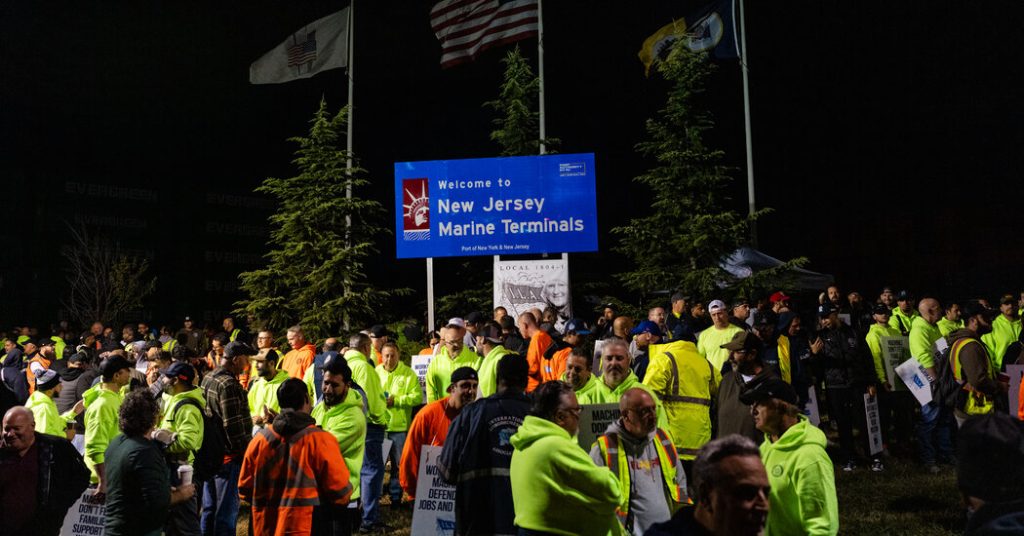Advertisement
SKIP ADVERTISEMENT
Supported by
SKIP ADVERTISEMENT
Truckers See Ports Turn Into Ghost Towns, and Worry About Their Future
The strike by longshoremen has halted commerce at Newark and other ports on the East and Gulf Coasts, affecting an ecosystem of supply-chain workers.

Peter S. Goodman
Reporting from around the Port of Newark
Every workday, on his early-morning drive to his job overseeing a warehouse in northern New Jersey, Sean Murphy takes in the frenetic scene of the busiest port on the East Coast.
Towering cranes lift shipping containers off vessels newly arrived at Newark from points around the globe. Mile-long freight trains pull cargo to and from the docks. Belching trucks clatter down the highway, hauling containers to distribution centers from Maine to Florida.
Not on Tuesday. As 45,000 dockworkers began a strike, shutting most of Newark and three dozen other shipping terminals along the Gulf and East Coasts, Mr. Murphy was confronted with the spectacle of a busy industrial hub now largely devoid of activity.
Here was a visual encapsulation of the challenge confronting the global economy: cargo marooned, commerce frozen and no clarity on when normalcy will return.
“It was eerie, like a ghost town,” Mr. Murphy said. “It was really creepy, if I can be honest with you. It was dead silent. I’ve never seen that in my entire life.”
Beyond the atmospherics, the effective shutdown of Newark and other major ports threatens the livelihoods of millions of people who work near the affected docks — and businesses that depend on the flow of exports and imports.
We are having trouble retrieving the article content.
Please enable JavaScript in your browser settings.
Thank you for your patience while we verify access. If you are in Reader mode please exit and log into your Times account, or subscribe for all of The Times.
Thank you for your patience while we verify access.
Already a subscriber? Log in.
Want all of The Times? Subscribe.
Advertisement
SKIP ADVERTISEMENT
Source: https://www.nytimes.com








More Stories
India Plane Crash: What Investigators Might Examine
Washington Post Cancels Ad From Groups Calling for Trump to Fire Musk
As Trump Attacks D.E.I., Some on the Left Approve